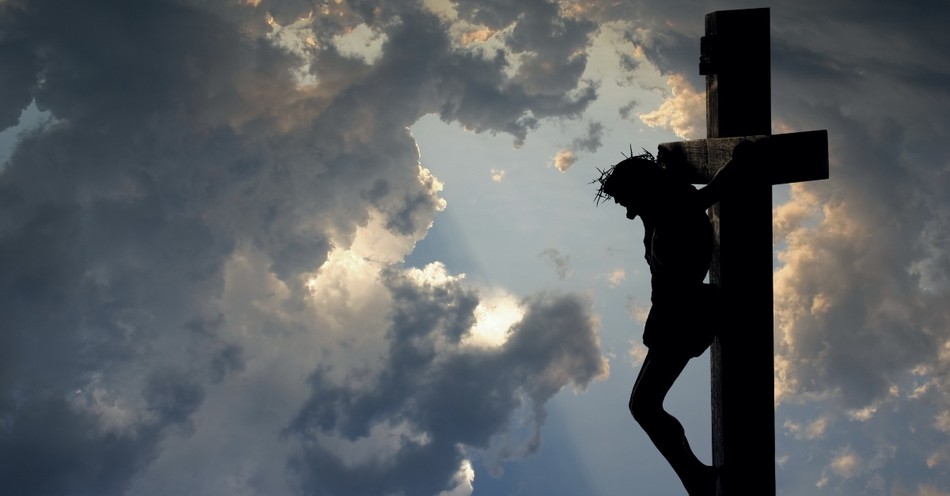The crucifixion of Jesus remains the focal point of Holy Week. As we wait in anticipation to celebrate the true meaning of Easter on Resurrection Sunday, taking time throughout Holy Week to soberly reflect upon our Lord’s sacrifice cannot be limited to Calvary.
There are many events that occurred prior to Good Friday, which help to shape our understanding of what Jesus experienced. These leading events paved the path that led Jesus to Golgotha’s hill and are significant to our contemplation during this season of Lent.
With each event, we gain a deeper appreciation of what our Lord experienced and endured for our eternal security.
Although there are several events that can be explored, I have chosen to focus on five that offer insight into Jesus’ inevitable crucifixion.
1. Jesus Raises Lazarus from the Dead
As Jesus’ popularity grew, the chief priests, the teachers of the law, and the elders became increasingly annoyed by the people’s favorable responses to Him. Most importantly, they were agitated by Jesus’ claim as the Son of God.
Even though they witnessed many of Jesus’ miracles prior to Him raising Lazarus from the dead, it is this specific event that triggered the plot to kill Jesus, as it revealed His power and authority as God manifested in the flesh.
Jesus identifies himself as the resurrection and the life in His conversation with Martha, and she acknowledges Him as the Messiah (John 11:27).
To these religious leaders of the day, Jesus was committing blasphemy by the boldness of such a claim. This single event sets the wheels in motion as Jesus’ enemies now conspire to end his reputation, ministry, and life.
2. Jesus Anointed at Bethany
There are two accounts of Jesus being anointed by two different women in preparation for His burial. The first takes place at the home of Lazarus prior to Jesus’ Triumphal Entry to Jerusalem. Lazarus’ sister Mary uses spikenard oil to anoint Jesus’ feet and dry them with her hair (John 12:3).
The second anointing occurs prior to The Last Supper, just two days before Passover. This happens in the home of Simon the Leper. In this account, an unnamed woman anoints Jesus’ head with spikenard oil (Mark 14:3).
Both times Jesus acknowledges what the women have done is an act of honoring Him in preparation for his burial. Both instances also record Judas being annoyed because he perceived the women’s act of honoring Jesus as wasteful of the extremely valuable and costly oil they used.
He argues it could have been sold and the money used to care for the poor. However, Judas was not really concerned about the poor. As the acting treasurer, he often stole money from their money bag and may have very well only been thinking of himself.
The bigger issue at hand exposes Judas’ heart toward Jesus. It was after Jesus’ anointing at Simon’s home that he sought to betray Jesus to the chief priests.
Jesus knew his death was imminent. Each time He was anointed, He used these events as an opportunity to make sure those around Him knew what to expect in the very near future concerning His death.
3. The Triumphal Entry to Jerusalem
Can you picture the scene? Imagine a crowd of people hailing you as King of kings, placing palm branches at your feet, and esteeming you with great acclaim.
Now imagine that in less than one week, some of those same people would gather again, but this time shouting, “Crucify Him.” This is exactly what happened to Jesus. Even knowing all of this, He still chose to die for all of those people, just as He chose to die for you and me.
In Matthew 21:9, we find these words, "The crowds that went ahead of him and those that followed shouted, “Hosanna to the Son of David!” “Blessed is he who comes in the name of the Lord!” “Hosanna in the highest heaven!”
The words of the people in the crowd were insightful. They recognized Jesus as the Messiah, yet there were those that still rejected Him as their Savior.
Entering Jerusalem on a colt never ridden on by any other human fulfilled the Messianic prophecy found in Zechariah 9:9 that says, “Rejoice greatly, Daughter Zion! Shout, Daughter Jerusalem! See, your king comes to you, righteous and victorious, lowly and riding on a donkey, on a colt, the foal of a donkey.”
Jesus did not make His way to Jerusalem riding on a horse but on a humble donkey. Just as He was born in a lowly manger, He did not present Himself as a conquering king who would establish an earthly kingdom.
Jesus confidently knew His identity and His assignment while here. On that first Palm Sunday, on His way to the cross, He did not allow Himself to become distracted by the accolades of the crowd.
4. The Last Supper
The Last Supper is the scriptural reference Christians use as the model for partaking in Holy Communion. It is considered one of the ordinances of the church universal and is frequently celebrated as part of the worship experience within the local church.
It is from Matthew 26:26-28 we now use as the basis of partaking of the Lord’s Supper and often read when presenting the communion elements:
While they were eating, Jesus took bread, and when he had given thanks, he broke it and gave it to his disciples, saying, “Take and eat; this is my body.” Then he took a cup, and when he had given thanks, he gave it to them, saying, “Drink from it, all of you. This is my blood of the covenant, which is poured out for many for the forgiveness of sins.”
Jesus and His 12 disciples gathered in a large upper room to celebrate the first day of the Festival of Unleavened Bread. The disciples went ahead of Jesus in order to prepare for the Passover meal.
Little did they know that this would be their last meal with Jesus prior to His crucifixion. During this meal, Jesus disclosed one of them would betray Him. It is revealed that Judas was indeed the disciple that would act as a traitor to Jesus.
5. The Garden of Gethsemane
It is in the Garden of Gethsemane on the Mt. of Olives we observe Jesus’ most humane moments of His existence. We recognize the agony He endured as he prayed with great intensity to the Father.
Scripture records in Luke 22:44, “And being in anguish, he prayed more earnestly, and his sweat was like drops of blood.”
In the last hours Jesus spent with His disciples before being arrested, He is most vulnerable and transparent as He acknowledges to our Heavenly Father, He does not want to endure death on a cross.
Yet, Jesus simultaneously desires to do God’s will and readily submits to the plans of God so that His purposes may be fulfilled through our Messiah.
Not only does Jesus model His commitment and obedience to God for us while in the Garden of Gethsemane, but He also models his commitment and discipline to prayer.
In Luke 22:39-40, we learn, “Jesus went out as usual to the Mount of Olives, and his disciples followed him. On reaching the place, he said to them, ‘Pray that you will not fall into temptation.’” Notice the disciples followed Jesus to his usual place of prayer. What a perfect example!
Jesus had a consistent prayer life. Not only did He pray in the Garden of Gethsemane, but He even prayed as He hung on the cross, dying. He demonstrates to us that no matter where we are or what the circumstances surrounding our situation may be, we cannot overemphasize the need to remain faithful in prayer.
For further reading:
3 Things Christians Should Know about Holy Week
What Do We Know About the Crucifixion of Jesus?
Photo Credit: ©iStock/Getty Images Plus/Liliboas





